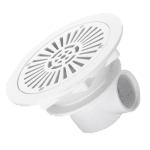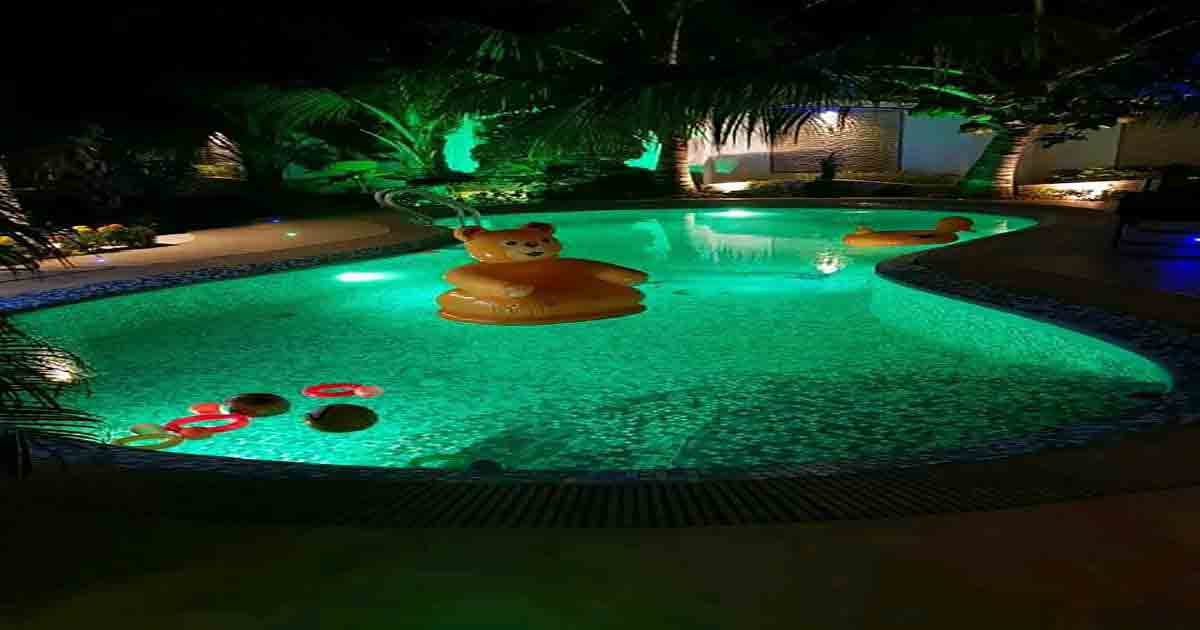Best tile adhesive for swimming pools
Selecting the best tile adhesive for swimming pools is crucial for ensuring the durability, longevity, and aesthetic integrity of the tiled surfaces. In this comprehensive description, we will explore various aspects of tile adhesives used in swimming pools, including types, properties, installation methods, considerations for different tile materials, maintenance, and the overall importance of choosing the right adhesive for this specific application.
Importance of Tile Adhesive in Swimming Pools
Tile adhesive plays a pivotal role in securing tiles to the pool substrate effectively. Unlike traditional cement-based mortar, which can be prone to cracking and water penetration, modern tile adhesives offer superior bonding strength, flexibility, and resistance to water, chemicals, and temperature fluctuations. The right adhesive ensures that tiles remain firmly in place, withstand environmental stresses, and maintain their aesthetic appeal over time.
Types of Tile Adhesives Best tile adhesive for swimming pools
Several types of tile adhesives are suitable for swimming pools, each offering unique properties and advantages:
- Epoxy Tile Adhesive: Epoxy adhesives are highly durable and resistant to water, chemicals, and temperature changes. They provide exceptional bonding strength and are ideal for installing glass, porcelain, and ceramic tiles in swimming pools. Epoxy adhesives cure without shrinking, making them suitable for underwater applications and areas exposed to constant moisture.
- Polymer-Modified Cementitious Adhesive: Polymer-modified cementitious adhesives combine cement with polymers, enhancing flexibility, adhesion, and water resistance. They are suitable for installing ceramic and porcelain tiles in swimming pools and other wet areas. These adhesives offer good workability and adhesion properties while providing some flexibility to accommodate minor substrate movements.
- Latex-Modified Cementitious Adhesive: Latex-modified cementitious adhesives incorporate latex polymers to improve bonding strength and flexibility. They are suitable for a wide range of tile materials, including ceramic, porcelain, and natural stone. These adhesives offer excellent water resistance and adhesion, making them suitable for both interior and exterior swimming pool applications.
- Thin-Set Mortar: Thin-set mortars consist of cement, fine sand, and additives that enhance bonding strength and workability. They are suitable for installing ceramic and porcelain tiles in swimming pools, providing good adhesion and water resistance. Thin-set mortars come in both unmodified and modified formulations, with modified versions offering improved flexibility and durability.
Properties and Characteristics
When selecting a tile Best tile adhesive for swimming pools, consider the following properties and characteristics:
- Water Resistance: The Best tile adhesive for swimming pools must be resistant to water and moisture to prevent tile delamination and damage over time. Epoxy adhesives and polymer-modified cementitious adhesives are particularly effective in wet environments.
- Chemical Resistance: Swimming pool environments expose tiles and adhesives to chlorine, saltwater, and other chemicals. Choose adhesives that can withstand exposure to these chemicals without compromising bond strength or integrity.
- Bond Strength: Best tile adhesive for swimming pools should provide strong initial tack and bonding strength to ensure tiles remain securely attached to the substrate. This is critical for preventing tiles from dislodging due to water pressure or thermal expansion.
- Flexibility: A degree of flexibility in the Best tile adhesive for swimming pools helps accommodate substrate movement and thermal expansion without causing cracks or tile detachment. Polymer-modified and latex-modified adhesives offer improved flexibility compared to traditional cement-based mortars.
- Ease of Application: Consider the ease of mixing, spreading, and adjusting the adhesive during installation. Adhesives with good workability and extended open times provide flexibility for positioning tiles correctly before the adhesive sets.
Installation Methods
Proper installation techniques are essential for maximizing the effectiveness of tile adhesives in swimming pools:
- Surface Preparation: Ensure the pool substrate is clean, dry, and free of dust, debris, and contaminants that could impair adhesive bonding. Smooth out any irregularities and ensure the substrate is structurally sound.
- Mixing: Follow manufacturer instructions for mixing the adhesive, ensuring the correct water-to-powder ratio or mixing time for epoxy adhesives. Use clean water and mix thoroughly to achieve a smooth, lump-free consistency.
- Application: Apply the Best tile adhesive for swimming pools to the substrate using the appropriate trowel size and technique recommended by the manufacturer. Work in manageable sections to prevent the adhesive from drying out before placing tiles.
- Tile Installation: Press tiles firmly into the adhesive, using spacers to maintain consistent grout joints. Adjust tile placement as necessary to achieve the desired layout and alignment.
- Grouting: Allow the adhesive to cure according to manufacturer specifications before grouting. Use a suitable grout that complements the adhesive and tile materials, ensuring a watertight seal and uniform appearance.
Maintenance and Care
Proper maintenance helps prolong the life and performance of tile Best tile adhesive for swimming pools:
- Regular Inspection: Periodically inspect tiled surfaces for signs of loose tiles, cracks, or deterioration in grout joints. Address any issues promptly to prevent water infiltration and further damage.
- Cleaning: Clean tiled surfaces regularly using mild, pH-neutral cleaners and non-abrasive tools to remove dirt, oils, and residues without damaging the adhesive or grout.
- Repair and Replacement: Repair or replace damaged tiles and grout joints as needed to maintain the integrity and aesthetic appeal of the swimming pool. Use compatible adhesives and materials to ensure a seamless repair.
Environmental Considerations
- VOC Emissions: Choose low-VOC (volatile organic compound) adhesives to minimize indoor air quality impacts during installation and use.
- Recyclability: Consider adhesives that incorporate recycled materials or support sustainable manufacturing practices to reduce environmental footprint.
Choosing the best tile adhesive for swimming pools is crucial for long-lasting, secure installation, especially in a constantly wet environment. The right adhesive ensures that pool tiles remain firmly attached, preventing water damage and maintaining the pool’s structural integrity.
Key Features of Top Swimming Pool Tile Adhesives
- Waterproof and Durable: Look for waterproof adhesives that can withstand constant exposure to water and chemicals like chlorine. This ensures that the tiles stay in place for years, even under challenging conditions.
- Flexible and Resistant to Temperature Changes: High-quality adhesives must also be flexible, accommodating the expansion and contraction of tiles due to temperature changes. This is especially important for outdoor pools.
- Strong Bonding Power: Products like epoxy-based adhesives or modified thin-set mortars are often recommended for swimming pools due to their excellent bonding strength and durability.
Brands such as Laticrete, Ardex, and Mapei offer some of the best tile adhesives for swimming pools, known for their superior performance, water resistance, and long-lasting results. Using the right adhesive ensures a secure, flawless tile installation that can withstand both time and the elements.
Selecting the right tile adhesive for swimming pools is critical for a durable and long-lasting installation. Pool tiles face constant exposure to water, chemicals, and temperature fluctuations, so the adhesive must provide a strong bond that withstands these elements. In this guide, we’ll explore the qualities to look for in pool tile adhesives, popular types of adhesives, and recommendations to help you choose the best adhesive for your pool project.
1. Key Qualities to Look for in Pool Tile Adhesives
When it comes to pool tile adhesives, it’s essential to choose a product specifically designed for use in wet and submerged environments. Here are some key qualities to look for:
- Water Resistance: Pool adhesives must be fully waterproof to prevent tiles from loosening due to water infiltration.
- Chemical Resistance: Since pool water is treated with chemicals like chlorine, the adhesive must resist chemical degradation over time.
- Flexibility: Pools experience temperature changes, especially outdoor ones. A flexible adhesive can expand and contract slightly without cracking, helping to maintain a secure bond.
- High Bond Strength: Pool adhesives should offer a strong bond to keep tiles in place despite the pressures and movements caused by water and swimmers.
- Ease of Application: The adhesive should be easy to apply and work with, especially in underwater or edge areas that require precision.
2. Types of Pool Tile Adhesives
Several types of adhesives are commonly used for swimming pools, each with specific properties and benefits:
a) Thinset Mortar (Modified Thinset)
Thinset mortar is one of the most popular adhesives for pool tiles, particularly modified thinset, which contains polymers for added flexibility and water resistance. Here’s why it’s an excellent choice:
- Durability: Thinset mortar is known for its strength and can withstand exposure to moisture and chemicals.
- Flexibility: Modified thinset has enhanced flexibility, making it suitable for pools where temperature fluctuations can cause expansion and contraction.
- Easy Application: Thinset can be easily applied with a trowel, ensuring a smooth and even bond for both ceramic and glass tiles.
Some popular brands of modified thinset for pools include MAPEI’s “Keraply” or “Ultraflex” and Custom Building Products’ “FlexBond.”
b) Epoxy Adhesive
Epoxy adhesives are highly water-resistant, durable, and effective for bonding pool tiles. Epoxy adhesives provide a strong, chemical-resistant bond, making them ideal for pools, particularly for glass tiles.
- Extreme Water Resistance: Epoxy adhesives are completely waterproof and withstand long-term submersion without losing their bond strength.
- High Bond Strength: Epoxy forms an exceptionally strong bond that works well with a variety of tile materials, including glass, porcelain, and ceramic.
- Chemical and Stain Resistance: Epoxy adhesives resist pool chemicals, stains, and even high pH levels, making them ideal for pools that undergo rigorous chemical treatment.
However, epoxy can be more difficult to apply than other adhesives and requires careful handling due to its quick setting time and the need for precise application. Popular pool epoxy adhesives include Laticrete’s “LATAPOXY 300” and Ardex’s “WA Epoxy.”
c) Polymer-Modified Cement-Based Adhesive
Polymer-modified cement-based adhesives combine the strength of cement with added polymers for flexibility and water resistance. They are versatile and commonly used in both commercial and residential pools.
- Flexibility and Durability: The added polymers allow the adhesive to withstand thermal expansion and contraction, making it ideal for outdoor pools.
- Water and Chemical Resistance: Polymer-modified adhesives offer excellent resistance to water and pool chemicals, ensuring a lasting bond.
- Ease of Use: This adhesive is easy to apply and offers an extended working time, which is helpful when working with larger pool installations.
Products like MAPEI’s “Kerabond T” with “Keralastic” additive provide an effective polymer-modified cement adhesive option for pools.
3. Choosing the Best Tile Adhesive Based on Tile Type
Different tile materials can impact your choice of adhesive. Here are some guidelines:
- Glass Tiles: Glass pool tiles are known for their beauty but require adhesives with strong bonding capabilities. Epoxy adhesives are often recommended for glass tiles due to their high bond strength and water resistance. Modified thinset is also a viable option if it’s specifically formulated for glass tiles.
- Porcelain and Ceramic Tiles: These tiles work well with polymer-modified cement-based adhesives or modified thinset. Both offer strong adhesion and durability, suitable for the weight and surface area of ceramic and porcelain tiles.
- Mosaic Tiles: Mosaic tiles, often made of glass or ceramic, require adhesives that provide a strong hold and flexibility. Epoxy or modified thinset is ideal, as both can handle intricate designs and small tile pieces without compromising durability.
4. How to Apply Pool Tile Adhesive Properly
Proper application is critical to ensuring the adhesive’s effectiveness. Here’s a step-by-step overview:
- Prepare the Surface: Make sure the pool surface is clean, dry, and free of debris. Remove any existing adhesive or mortar from previous installations.
- Mix the Adhesive: If using a powdered thinset, mix it according to the manufacturer’s instructions. Epoxy adhesives typically require mixing of components as well.
- Apply the Adhesive: Use a notched trowel to spread the adhesive evenly across the surface, ensuring full coverage. For underwater areas, consider using adhesives that are designed specifically for submersion.
- Place the Tiles: Press each tile firmly into the adhesive, making sure there are no air gaps. Use spacers to ensure consistent grout lines between tiles.
- Allow Proper Curing Time: Let the adhesive cure according to the manufacturer’s instructions, which is typically 24-48 hours for thinset and shorter for epoxy. Avoid using the pool until the adhesive is fully set.
- Apply Grout and Sealant: Once the adhesive is set, apply grout between the tiles and allow it to dry. If recommended, apply a waterproof sealant to protect the tiles and adhesive.
5. Maintenance Tips for Long-Lasting Adhesion
Once your tiles are installed, ongoing maintenance helps preserve the bond and appearance of the pool tiles:
- Regular Cleaning: Use gentle, non-abrasive cleaners to remove calcium deposits and algae. Harsh chemicals can degrade adhesives over time.
- Maintain Water Chemistry: Keep the pH, chlorine, and calcium hardness levels balanced to prevent damage to the tiles and adhesive.
- Check for Loose Tiles: Periodically inspect the tiles for any loosening or cracking, which may indicate water infiltration or adhesive degradation. Addressing issues early can prevent larger problems.
Conclusion
Selecting the Best tile adhesive for swimming pools involves considering factors such as adhesive type, properties, installation methods, and maintenance requirements. Epoxy adhesives, polymer-modified cementitious adhesives, and latex-modified adhesives are popular choices for their durability, water resistance, and bonding strength. By choosing the right adhesive and following proper installation and maintenance practices, swimming pool owners can ensure that tiled surfaces remain attractive, functional, and resilient against the challenges of aquatic environments.


















